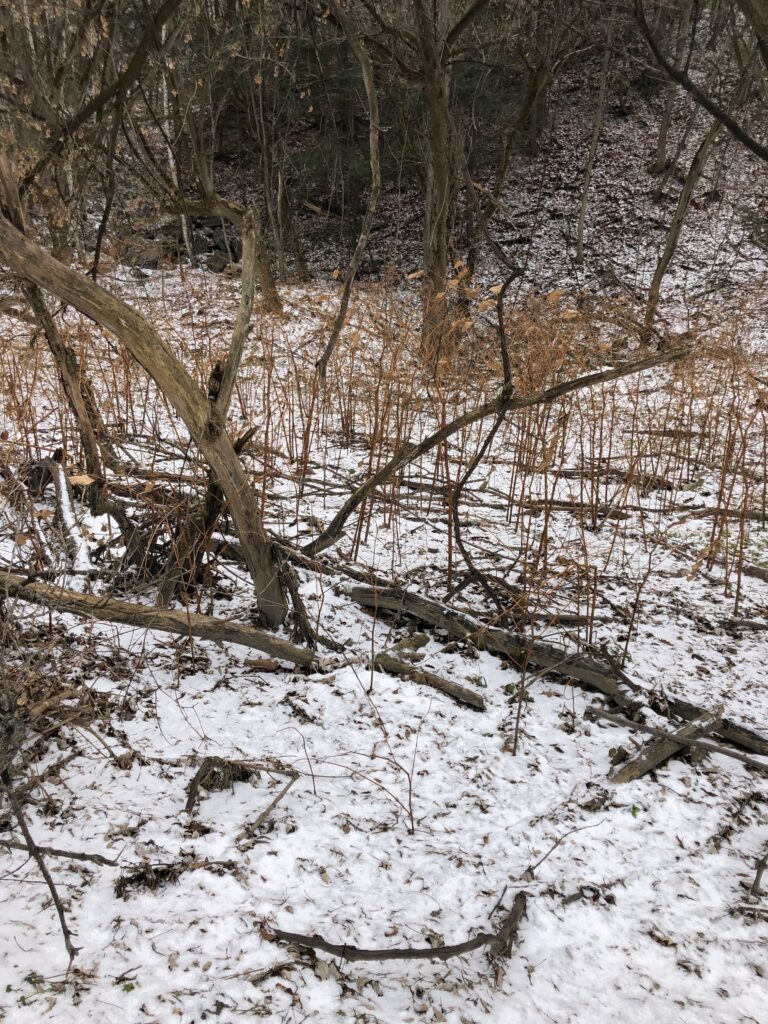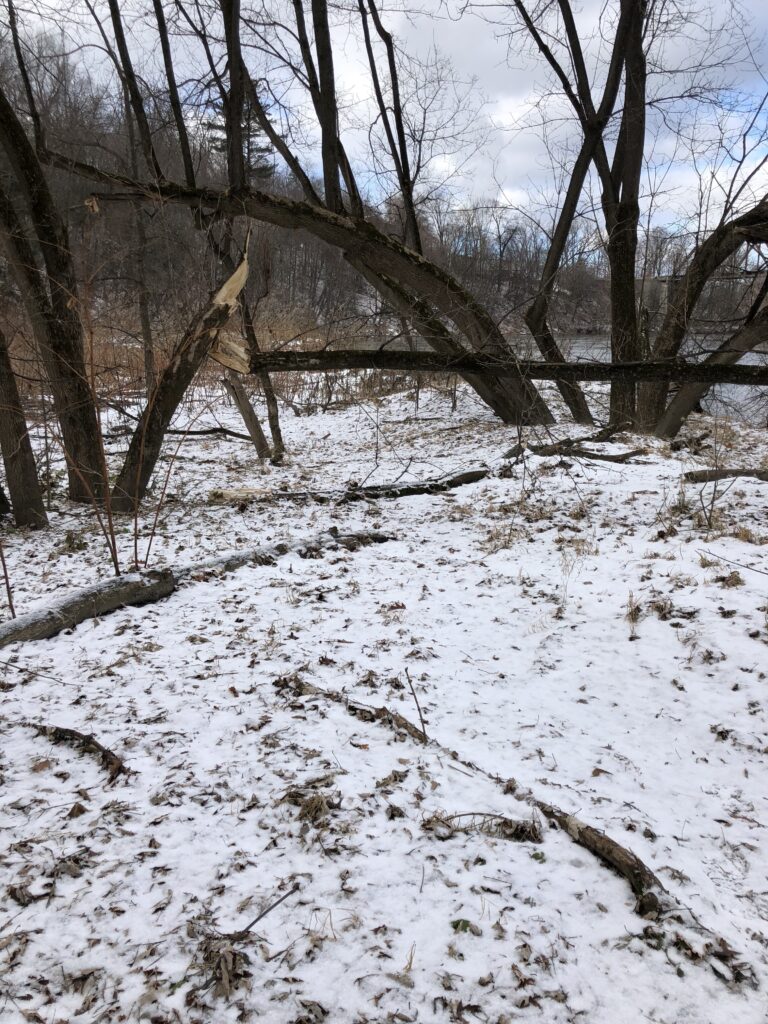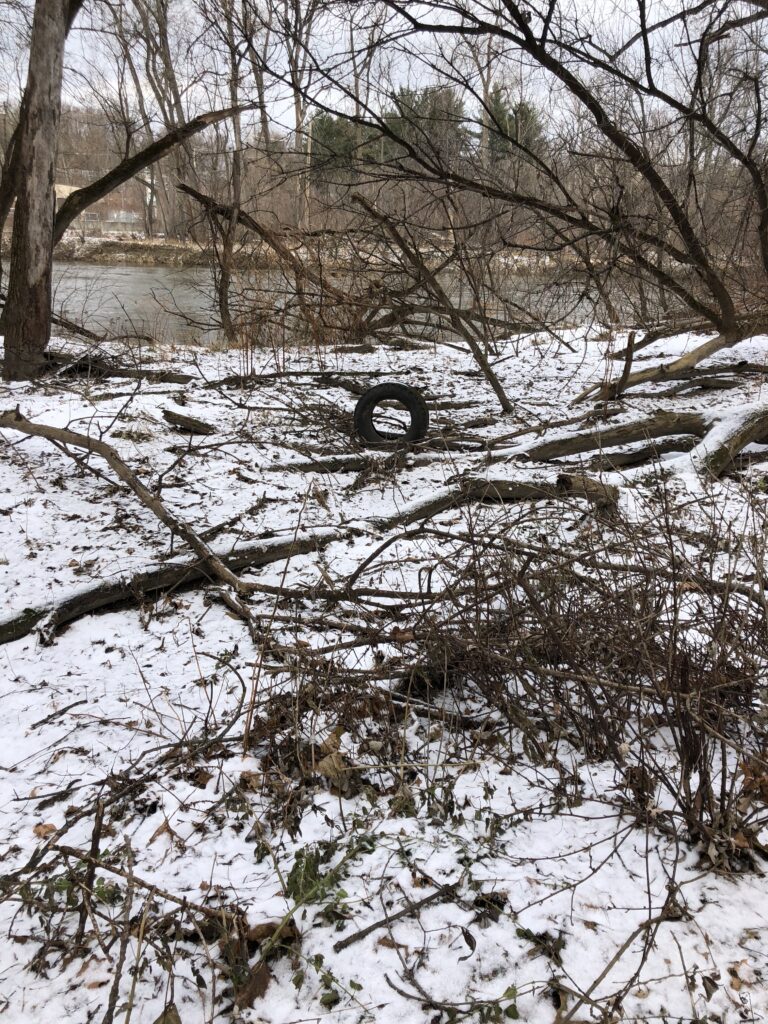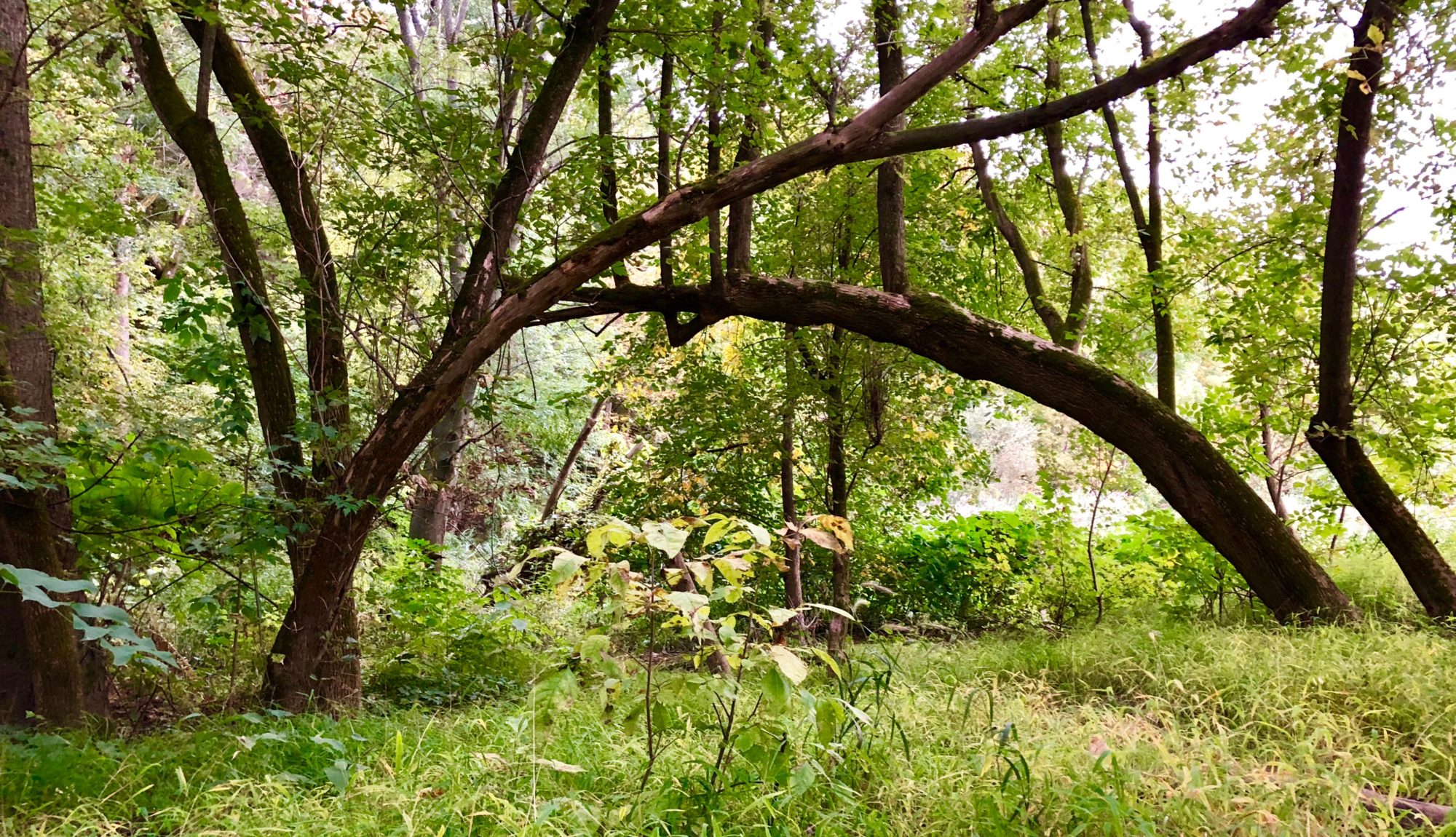Welcome Winter! After a long summer we have been awaiting your arrival and finally you have come!
In the recent weeks there has been a considerable amount of snow, more than November has seen in a long time but before visiting my spot, the snow turned to rains and the snow was gone. Luckily a light dusting has been falling over the past couple days almost returning the landscape to its former beauty. Over the past month, major changes have occurred. The wall of Japanese Knotweed that I once though would never change has shrived almost nothing which has completely changed the feeling of the landscape. The fungi has all rotted and fallen to the ground, ready for new life. The wet wood of the fallen trees has hardened and dried, in summary the land has prepared itself for winter. Icicles have formed on the snags and the thin layer of snow mean everything is crunching underfoot. Unfortunately, I could not see any tracks. The thin layer of snow left some grass and sticks poking up and therefore it was incredibly hard to tell what was what in the ground and understanding the depth between the tracks and pieces of snow falling from the trees.


The Land use History:
After the Wisconsin Glaciation, the land was inhabited by hunter gathers. Around 1400 AD, the Abenaki people inhabited the area and began the agricultural industry, planting corn along the banks of the river. In the late 1700s settlers started coming into Vermont. With settlement came changes to the landscape, this meant huge amounts of logging and clear cutting. the Vermont economy became dependent on their exports of timber and animal products. Burlington became a trading hub after Ira Allen built a sawmill, forge and gristmill all powered by the Winooski falls about a mile upstream. his investment lead to major development in the state of Vermont.
Major development in the state of Vermont lead to a boom in the agricultural business. Sheep grazing along the river then turned to cattle and dairy production. However in the mid 1900’s there was a major decrease in the amount of agriculture and the low lands of Burlington became abandoned. In the 1980’s Burlington bank of the Winooski river became a dumping grounds for trash, furniture, old cars and other large debris. Then in 1986 Will Raap, the founder of Gardeners Supply Co. began the Intervale Project and bringing about another major land change. The area along the river has returned to its roots and is now the Intervale is a major hub of sustainable agriculture. A little further down the river to my spot is not part of the Winooski River walk and is conserved and protected land. Thought he area has not been a dumping ground of 30 years there is still evidence of the dump it was before. The Winooski River has gone through an exodus of land changes and is a perfect example of humans impression on the land. There is still evidence of every event. it has been 30 years since the majority of trash was removed and those tires have not even begun to biodegrade. Let this be a sign that how we treat our land needs to change to one of respect and gratitude.


Sources:
(n.d.). Human history. Retrieved from Friends of the Winooski website: https://winooskiriver.org/human-history.php
(n.d.). History. Retrieved from Intervale Center website: https://www.intervale.org/about-us/#top
